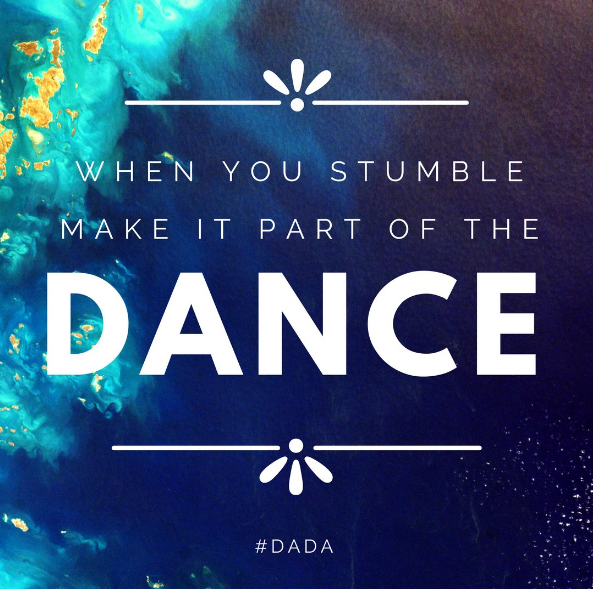This blog post is motivated by a recent encounter during a private lesson with one of my students. I was covering the basic fundamentals moves that I taught in my public class for years. I’ve been working with this student for about three weeks now, emphasizing the importance of her knowing and understanding what she’s doing in her basic drills. In my private sessions we typically begin the hour with a run through of the fundamentals from top to bottom, and the student must execute them as flawlessly as possible without error before we can begin any couple’s dancing.
A Private Session Flow…
If a student fails to execute any of the moves properly, or executes them out of order, they must begin the entire sequence of moves again from the beginning. The purpose of this exercise is two-fold. First, the exercise drives home the need to practice in between sessions because the students know that we will not proceed to the enjoyable part of the sessions – the dancing and learning new moves – unless they get through the exercise. Secondly, performing this exercise at the beginning of the sessions allows me to determine where I need to focus my attention for the remainder of the session as each move in the exercise has a specific purpose in the dance.
By focusing on where the student is struggling – by the numbers – I can fix their problem by the numbers and show them how the particular move they are struggling with actually looks in the dance. I can also then show them modified versions of the same moves, which motivates them to try harder, focus more in the sessions and walk away from the session more enlightened and determined than they were when we started the session. They’re also motivated to learn faster because they can see where the exercise at the beginning of the class is taking them. In essence, I prefer that my students be fundamentally sound. I prefer that they know what they’re doing in the dance and more importantly, I prefer that they know why.
Now to the point of this blog post (I know, get to it already, right?!!)…

Revelation Thru Education
The student coming to me for privates, although she has only been coming to me for about three weeks, says she has been dancing (Steppin’) for a little over three years. She had a consistent degree of proficiency in the dance before coming to me, so I agreed to provide instruction to her because I knew that it wouldn’t take much to refine her skills. What took me by surprise in our last session was the fact that we actually talked more than we danced. We probably talked for more than 35 minutes of the one hour session, with every question being about how to perform a particular move in the drill exercise, foot placement, weight shifts, timing, positioning, etc. I was totally into the session as I find the curious mind in the dance to be the most open to learning and development in the dance and it makes for a more confident and proficient dancer.
Near the end of our session together, she asked me what I thought was the most profound question I’d ever been asked which became the basis for me writing this blog. Her question was simple. “I have another question. I’ve been dancing for three years now”, she said. “Why haven’t I learned about this exercise or the moves in the exercise before now?” I tried to make my answer just as simple as the question posed. My answer: “Because everyone that teaches doesn’t necessarily focus on the fundamental aspects the dance and many of them don’t know what they are, it’s just that simple.” My curiously frustrated student had a look of bewilderment on her face and seemed to agree with my statement given her past experiences in learning Chicago Steppin’.
Master Your Fundamentals
In any physical endeavor which requires proficiency to reach a standard of excellence, careful attention must be given to the fundamental aspects of that endeavor to become a master of it. Basically, you must “KNOW what you know”. When I teach my students, I require of them a fundamental knowledge of every move they do – the name of the move, the foot assignment for the move, the position of the body on the floor for each step in the move, etc. – before I provide any level of certification from me should they desire it. Many of my students don’t understand why I do this initially, but as they become more proficient in the dance and see themselves moving past others who have come into the dance at the same time as they have, they appreciate being held to a higher standard of expectation and excellence.
I equip my students learning to “Follow” with the knowledge of Steppin’ fundamentals so that they may make their own assessment of the people they’re dancing with. I tell them that regardless of their level of proficiency in the dance a good “Lead” has the ability to assess their skill set quickly and tailor the dance to the “Follow” level. When teaching workshops I harp on the fact that a good Lead can assess the skill set of a Follow of Chicago Steppin in the first 4-5 eight counts of the dance. I challenge my students to ask the Lead for an explanation of what move they were trying to perform for the Follow that they couldn’t seem to get. A good Lead can explain their move, walk you through the move and actually perform the move (caveat: I discourage this behavior at a set – teach in the class, not on the dance floor) and help clear up your understanding and set you at ease while dancing.

Instructor Responsibility
As instructors, I believe we have the responsibility to make our students as competent on the dance floor as possible so that as they may grow and evolve in the dance and do so with a sense of pride and accomplishment – WITHOUT WASTING A LOT OF TIME LEARNING OVER AGAIN WHAT THEY SHOULD ALREADY KNOW! We have to give them the tools they need to be successful. We have to provide the basic fundamentals. When a stepper is fundamentally sound, it doesn’t really matter who they dance with. It doesn’t matter what workshop they attend or what stepper set they attend – they are equipped to adapt and adjust to any situation they find themselves as it relates to Steppin’, their personal enjoyment of it and the return of investment they receive from the time and resources they put into learning.
I tell practically everyone that I teach that I’m not the most proficient stepper around, nor do I consider myself a “heavy-hitter”, whatever that means. What I AM, however, is fundamentally sound in the dance to the point that I can execute moves in the dance (Lead or Follow) with ease and confidence that shines through while I’m dancing. I’m never lost in the dance. I never have to worry about what move I’m going to do next. I can perform single and combination moves on time and with a deliberate smooth flow that allows anyone following me to do so with ease – all because I’m proficient in my fundamentals. I can make the dance look easy now because in a way it is…I know that I know what I know…know what I mean?
So…
You don’t have to be the best in Steppin’ to be fundamentally sound and have a full dance card for the evening. I know because I’m living the experience daily. If you want to be a good dancer, master the basics. It’ll get you where you want to be much faster than taking short cuts. Otherwise, you wind up having to frustratingly return to them after the fact and possibly lose interest in learning the dance.
Let me know what you think. Leave a comment below and by all means, feel free to share this post. Thanks for taking the time to read this and thanks for your support. We’ll see you on the wood!


What else is there to say. One must yield to the master to become masterful.
Yes indeed my friend, yes indeed. 🙂
Victor, first I would like to thank you for your enthusiasm, dedication and willingness to share your knowledge of Chicago Stepping. I have had the opportunity and first hand experience of being a recipient of your instruction on several occasions and honestly have always received what I needed to help me become a better stepper. I also find your instructional videos to be very helpful and will at times recommend new steppers review the videos to help them remember how to preform the basic moves in the event they forget while practicing at home. My instructor here in Atlanta emphasizes the importance having fundamentally sound basics and as you know, we are by the numbers, thank you My Brother Love and Respect.
Thank you for the kind sentiments, the positive feedback and the words of encouragement Greg. From the first time we met, it has felt like family ever since. I’m both grateful and honored to call you both brother and friend. I’m looking forward to seeing you and the Queen at AMMWE2018 in Houston. Be well my brother and keep it FUN-damental! #HONORS #SALUTE
My wife and I are Filipinos who are able to relate to your “love” of the dance. She and I focus on each other and the music when we’re dancing. We hope to evolve into authentic CHICAGO STYLE steppin’ dancers as time goes by. When that happens, she and I hope to share this dance in the Filipino community we associate with. We are very lucky and grateful we have you since she and I started learning
this dance almost three years ago.
Thank you so much for the kind and encouraging words my friend. I wish you and your wife nothing but success in your pursuit of the dance! 🙂